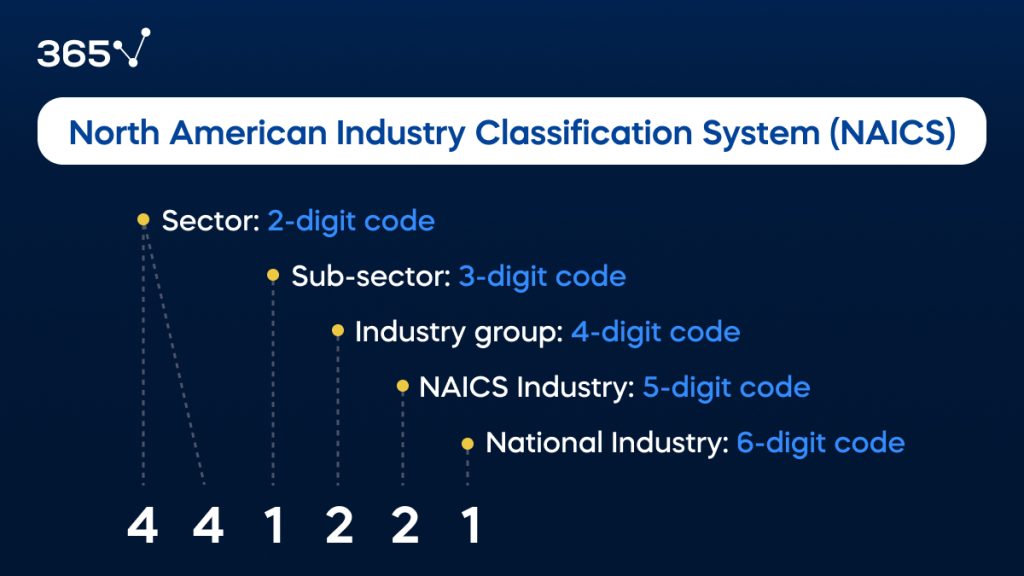Governmental Industry Classification Systems
Join over 2 million professionals who advanced their finance careers with 365. Learn from instructors who have worked at Morgan Stanley, HSBC, PwC, and Coca-Cola and master accounting, financial analysis, investment banking, financial modeling, and more.
Start for Free
Industry classification systems are frameworks that categorize companies into different industries based on their primary business activities. These systems can be commercial (incorporating for-profit public firms only) and governmental (developed by government bodies).
This article addresses the definition of classification systems and provides an overview of commercial ones before diving into governmental industry classification systems. It ends with a comparison between the two types of classification.
What Is an Industry Classification System?
Industry classification provides a standardized framework for categorizing businesses based on their primary economic activity, allowing for easy comparison and analysis. There are two groups of classification systems: governmental and commercial.
The former is developed and maintained by government agencies, such as the U.S. Census Bureau, the EU, and the United Nations. Policymakers, researchers, and statisticians rely on them to track economic activity trends, monitor industries’ performance, and inform policy decisions.
Private companies—such as MSCI and Standard & Poor’s (S&P)—develop and maintain commercial systems. These are standard tools for financial analysts, investors, and fund managers to assess the performance of companies, construct investment portfolios, and make investment decisions.
The primary commercial industry classification systems include the following:
- Global Industry Classification Standard (GICS)
- Russel Global Sectors (RGS)
- Industry Classification Benchmark (ICB)
(Our dedicated Industry Classification Methods and Systems article provides a more detailed overview.)
Governmental Industry Classification Systems
Governmental industry classification systems are standardized ways of categorizing businesses based on their predominant economic activity. They’re typically developed and maintained by national statistical agencies.
The agencies organize the statistical data they publish per industry type and ensure that their system is consistent over time and across countries. This allows analysts to quickly examine various firms, regardless of the location.
The primary governmental industry classification systems worldwide include the following:
- International Standard Industrial Classification of All Economic Activities (ISIC)
- Statistical Classification of Economic Activities in the European Community (NACE)
- Australian and New Zealand Standard Industrial Classification (ANZSIC)
- North American Industry Classification System (NAICS)
Although there are some differences, the governmental systems share similar methodologies—e.g., they classify companies by their primary type of economic activity.
Additionally, they all provide a hierarchical framework with several levels of aggregation to group businesses into increasingly broader categories—illustrated below with NAICS because it’s the most popular governmental system.
North American Industry Classification System (NAICS)
NAICS is one of the most popular differentiation methods. It uses a six-digit code to structure its categories into five aggregation levels. The greater the number, the narrower the category. Note the following graphical representation of this structure:

Consider a firm producing bottled water with the NAICS code 312112.
| Level | NAICS Code | Title |
| Sector | 31 | Manufacturing |
| Sub-sector | 312 | Beverage and Tobacco Product Manufacturing |
| Industry Group | 3121 | Beverage Manufacturing |
| NAICS Industry | 31211 | Soft Drink and Ice Manufacturing |
| National Industry | 312112 | Bottled Water Manufacturing |
Please note that the codes in this classification system are hierarchical―i.e., every subsequent level builds upon the previous ones.
Let’s try to decipher the code.
The first two digits (31) signify the broadest sector category, manufacturing. Next, we take the first three digits (312) to identify the subsector, followed by the industry category (3121) and the NAICS industry (31211). The last numerical level represents the national industry group, which, in our example, is Bottled Water Manufacturing (312112).
Commercial vs. Governmental Industry Classification Systems
Now that we understand commercial and governmental industry classifications, let’s compare their prevalent features. The comparison table below outlines the main differences between the two classification systems.
| Commercial Classification Systems | Governmental Classification Systems |
| Disclose information about industry-constituent firms. | Do not disclose information about industry-constituent firms. |
| Reviewed and updated frequently | Reviewed and updated relatively infrequently—generally once every five years |
| Differentiate between large and small firms. Include for-profit publicly traded companies only. | Do not differentiate between: – Large and small firms – For-profit and non-profit entities – Private and public companies |
Notice that governments don’t reveal the individual firms included in a group, while commercial systems do. So, analysts should use the latter if they need access to industry constituents.
In both cases, the structures are reviewed regularly—although less frequently for governmental systems. For example, NAICS is revisited once every five years.
Unlike commercial systems, government bodies don’t distinguish between small and large companies. And they don’t differentiate between profit vs. non-profit and private vs. public entities. But commercial systems incorporate for-profit public firms only.
Beyond Industry Classifications
What’s essential for you to remember is that neither category can serve as a good starting point for peer analysis. For instance, we cannot assume that all companies in an application software sub-industry would be Microsoft competitors.
To conduct such an analysis, comparable firms can be placed together in a peer group. This, however, requires specific criteria to be met. In turn, peer group construction is tied to several company and industry analyses, such as Porter’s Five Forces, Industry Life Cycle Model, and PESTEL. As such, it lays a solid foundation for high-quality analysis.
(We elaborate on constructing a peer group in a separate article. We recommend you take a look at it.)
Next Steps
The ability to use commercial and governmental industry classification systems is vital when conducting industry analysis, but it’s only a fraction of the skills required to determine company prosperity.
If you wish to take your skills to the next level, consider our Introduction to Industry and Company Analysis course. Browse through our course library and learn the crucial skills to become a financial analyst, investment banker, or investment analyst from industry experts. Sign up for free and try our training.
FAQs
The federal government uses the North American Industry Classification System (NAICS) to compare and analyze business data from North American countries. It was developed in 1997 to replace the Standard Industrial Classification (SIC) system.
You can search the codes of businesses and industries on the U.S. Census Bureau’s dedicated page or the NAICS website. The U.S. Bureau of Labor Statistics also provides an up-to-date NAICS code list.
There are two types of classification systems: commercial and governmental.
Private companies—such as MSCI, S&P Dow Jones Indices, and FTSE Russell—develop and maintain commercial classification systems for for-profit publicly traded companies.
Governmental industry classification systems are developed and maintained by national statistical agencies. They include information regarding for-profit, non-profit, private, and public organizations but don’t disclose information about industry-constituent firms.
